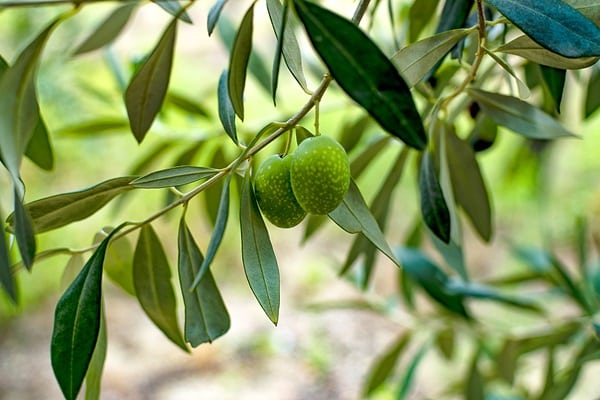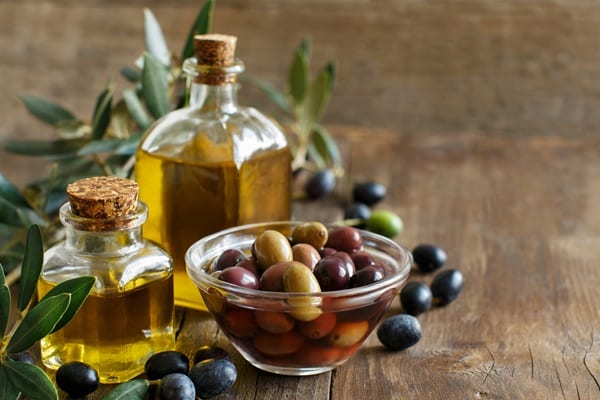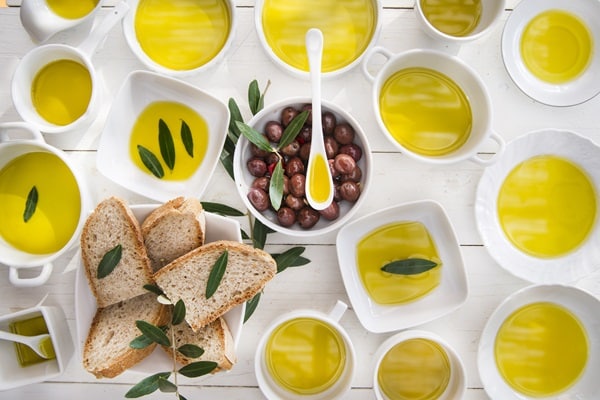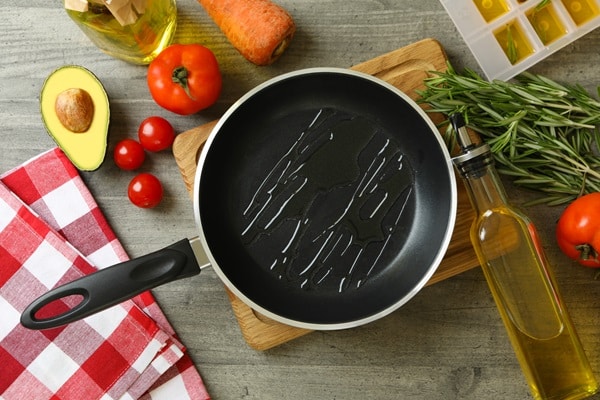Embarking on a journey through the olive groves of the world reveals more than just the origins of a culinary staple; it uncovers a story steeped in history and tradition. This guide serves as a compass for navigating the diverse landscape of olive oils, offering insights from the ancient trees’ whispering leaves to the modern kitchen’s sizzling pans. It’s a tale of health, flavor, and the timeless bond between nature and nourishment. So before you pour that olive oil into your pan, read on to discover the rich and fascinating history behind this essential ingredient.
Contents
Tracing The Roots Of Olive Oil

The olive tree, with its gnarled branches and silvery leaves, has been a silent witness to the march of time, rooting its history in the cradle of civilization. The Mediterranean basin, a tapestry of sunny skies and fertile lands, has been the heartland of olive cultivation for millennia. Here, the combination of climate and tradition has given rise to an oil that is as varied as the cultures that cherish it. From the sun-drenched groves of Spain to the ancient terraces of Greece, each region imparts its unique signature to the oil it produces.
The influence of terroir cannot be overstated when it comes to the character of this golden elixir. Just as the finest wines embody the essence of their vineyards, so too does olive oil reflect the soil, climate, and age-old practices of its homeland. It’s a product of place, a result of the intimate dance between earth and element. This geographical alchemy is what makes each bottle a repository of flavors and stories, waiting to be discovered by those eager to delve into its liquid depths.
Decoding The Labels

Navigating the world of olive oils can be akin to understanding a foreign dialect, with labels that offer a lexicon of terms from ‘extra virgin’ to ‘cold-pressed’. Extra virgin olive oil, the crème de la crème of oils, is celebrated for its superior quality and flavor, a direct result of olives that are pressed without heat or chemicals. Virgin olive oil follows closely, still made without refined processes but with a slightly more lenient standard for acidity and taste. As one moves down the spectrum, the oils, while still versatile, become more refined and suited for high-heat cooking, losing some of their distinct flavors in the process.
The term ‘light’ olive oil can be misleading, as it refers not to a lower calorie content but to a lighter flavor and color, often the result of blending refined olive oils. Pomace olive oil, the least known, is extracted from the leftover pulp after the first press, offering a more economical option with a milder olive presence. Understanding these categories is crucial for consumers to make informed decisions that align with their culinary needs and taste preferences. Each type of oil serves a purpose, from dressing delicate salads to sautéing a hearty stir-fry, and recognizing the right one for the job is an essential skill in any cook’s repertoire.
A Trove Of Wellness

The health benefits of olive oil are as robust as the trees from which they come. This liquid gold is lauded for its monounsaturated fats, which are known to support heart health and balance cholesterol levels. Its composition is a bounty of antioxidants, including vitamin E and polyphenols, which combat oxidative stress and may contribute to the longevity seen in Mediterranean populations. The oil’s anti-inflammatory properties are another feather in its cap, making it a staple in health-conscious diets.
Yet, amidst the accolades, misconceptions about its fat content persist. It’s essential to understand that not all fats are foes; in fact, the fats in olive oil are the allies of well-being, contributing to satiety and nutrient absorption. They are a far cry from the saturated fats found in many processed foods, which are often linked to health issues. Embracing olive oil in daily consumption is to embrace a tradition of wellness that has endured through the ages, one that modern science continues to affirm.
The Art Of Tasting

To truly appreciate olive oil, one must engage in the ritual of tasting, an experience that awakens the palate to its complex profile. Professional tasters seek out the oil’s fruitiness, bitterness, and pungency, indicators of quality and character. Fruitiness comes from fresh olives, bitterness from the phenolic compounds, and pungency, a peppery sensation signaling the presence of antioxidants. These characteristics can vary widely, painting a sensory picture of the oil’s origin and variety.
Tasting also involves noting the oil’s aroma, which can evoke a range of scents from grassy to nutty, and its texture, which should feel smooth and not greasy. For those looking to refine their tasting skills, it’s recommended to start with small sips, letting the oil coat the mouth to discern its full range of flavors. It’s an art that, once honed, can transform a simple dip of bread into a journey through the senses, revealing the subtle nuances that distinguish a mediocre oil from an exceptional one.
Culinary Alchemy

The smoke point of an oil is a critical factor in cooking, determining how well it will fare in the face of high heat. Olive oil, particularly the extra virgin variety, is often celebrated for its flavor, but it has a lower smoke point compared to other oils, making it less ideal for high-temperature cooking like deep-frying. However, it shines in medium-heat applications such as sautéing and roasting, where its flavors can infuse the dish without the risk of burning. For those who prefer a neutral taste and higher smoke point, refined olive oils are the go-to, adept at handling the rigors of frying and searing.
Incorporating olive oil into daily meals goes beyond the stove; it’s a versatile ingredient that can be used in everything from dressings to marinades to baking. The key is to match the oil’s flavor profile with the dish’s ingredients. A robust, peppery extra virgin olive oil can elevate a simple pasta dish or a rustic bread, while a lighter oil might be better suited for a delicate fish or a fresh salad. Experimenting with olive oil in recipes can lead to delightful discoveries, enhancing flavors and adding a touch of nutritional richness to every meal.
Preservation Secrets

Storing olive oil correctly is paramount to preserving its flavor and health properties. Light, heat, and air are the nemeses of olive oil, each capable of degrading its quality over time. To maintain its essence, olive oil should be stored in a cool, dark place, ideally in a dark-tinted glass bottle or a stainless-steel container that can shield it from light exposure. While some may be tempted to display the oil on a sunny countertop, this practice can lead to a faster deterioration of the oil’s character.
The shelf life of olive oil is another consideration; it doesn’t improve with age like some wines. Freshness is a virtue, with most oils best consumed within a year of bottling. If the oil begins to give off an odor or flavor reminiscent of crayons or putty, it’s likely gone rancid and should be discarded. Regularly tasting a small amount can help detect any changes and ensure that the oil is still in its prime for consumption. Proper storage is not just about maintaining taste but also about safeguarding the oil’s nutritional benefits, which are best enjoyed when the oil is fresh.
Nature’s Elixir For Skin

Olive oil’s benefits extend beyond the kitchen; it’s a natural treasure for skincare, revered for its moisturizing and protective properties. Rich in vitamins and antioxidants, it’s been a staple in beauty regimens since ancient times, offering a simple yet effective solution for maintaining skin health. Its hydrating qualities make it an excellent choice for combating dryness, and when applied to the skin, it can help to create a barrier that locks in moisture without clogging pores.
The versatility of olive oil in skincare is impressive, with uses ranging from a gentle makeup remover to a soothing bath additive. For those who prefer a more hands-on approach, creating a homemade olive oil scrub by mixing the oil with natural ingredients like sea salt or sugar can exfoliate and rejuvenate the skin. It’s a testament to the oil’s purity and effectiveness that such a humble ingredient can find its place in the sophisticated world of skincare, offering a natural alternative to chemical-laden products.
The Savvy Shopper’s Guide

Selecting a high-quality olive oil can be a daunting task, with shelves lined with bottles claiming superiority. Knowledge is power in this regard, and understanding what to look for on labels can make all the difference. Certifications like PDO (Protected Designation of Origin) or organic labels can be indicators of quality, reflecting strict production standards and purity. The harvest date is another crucial piece of information, as it can give insights into the oil’s freshness, a key factor in flavor and health benefits.
When shopping for olive oil, it’s also wise to consider the type of container. Clear glass bottles may allow for visual inspection of the oil, but they don’t offer protection from light, which can degrade the oil’s quality. Instead, look for dark glass bottles or other opaque containers. Engaging with local producers or specialty stores can also provide a wealth of information, allowing for a more informed choice. They often provide the stories behind the oils, connecting consumers with the traditions and meticulous processes involved in crafting the oil, enriching the experience beyond the mere act of purchasing.
Embark On Your Olive Oil Adventure!
As this guide concludes, remember that the world of olive oils is vast and ripe for exploration. Let curiosity lead you to try different varieties, experiment with flavors in your cooking, and even incorporate this liquid treasure into your self-care routine. Seek out new brands, ask producers questions, and taste the diversity of offerings. Your kitchen is the starting point of a sensory journey that promises to enrich your meals and well-being. Step into this adventure, and let your palate be your guide.


